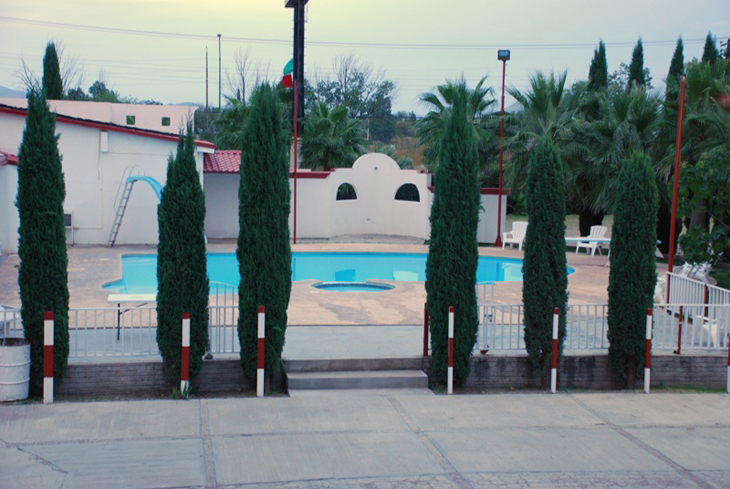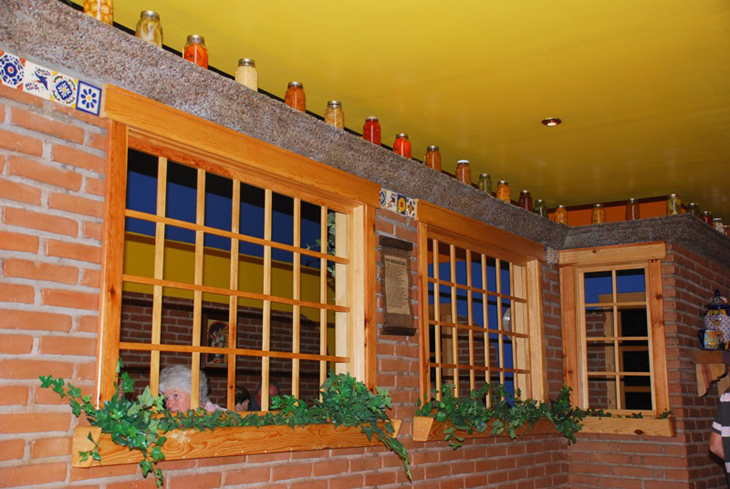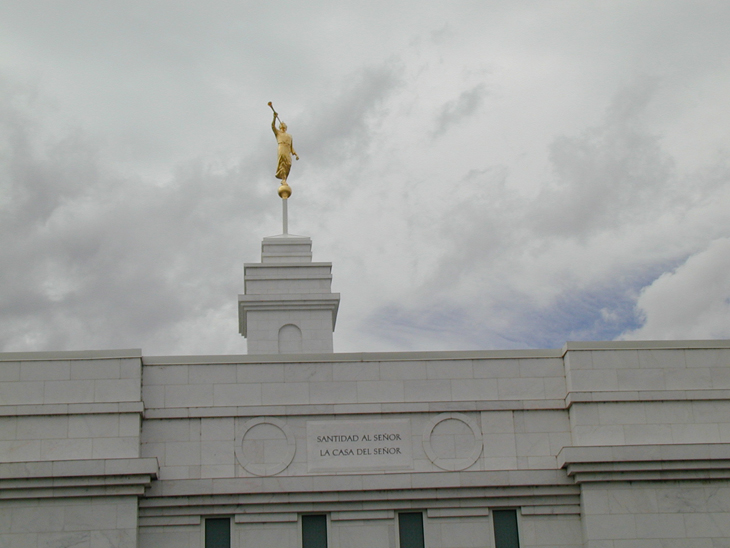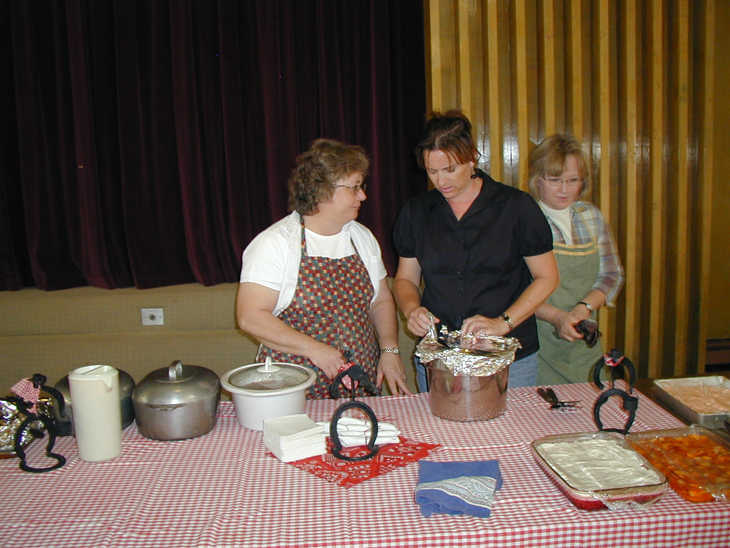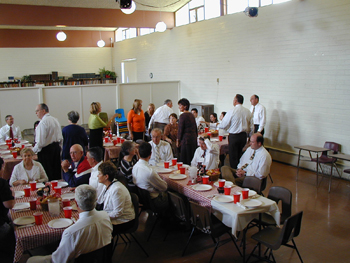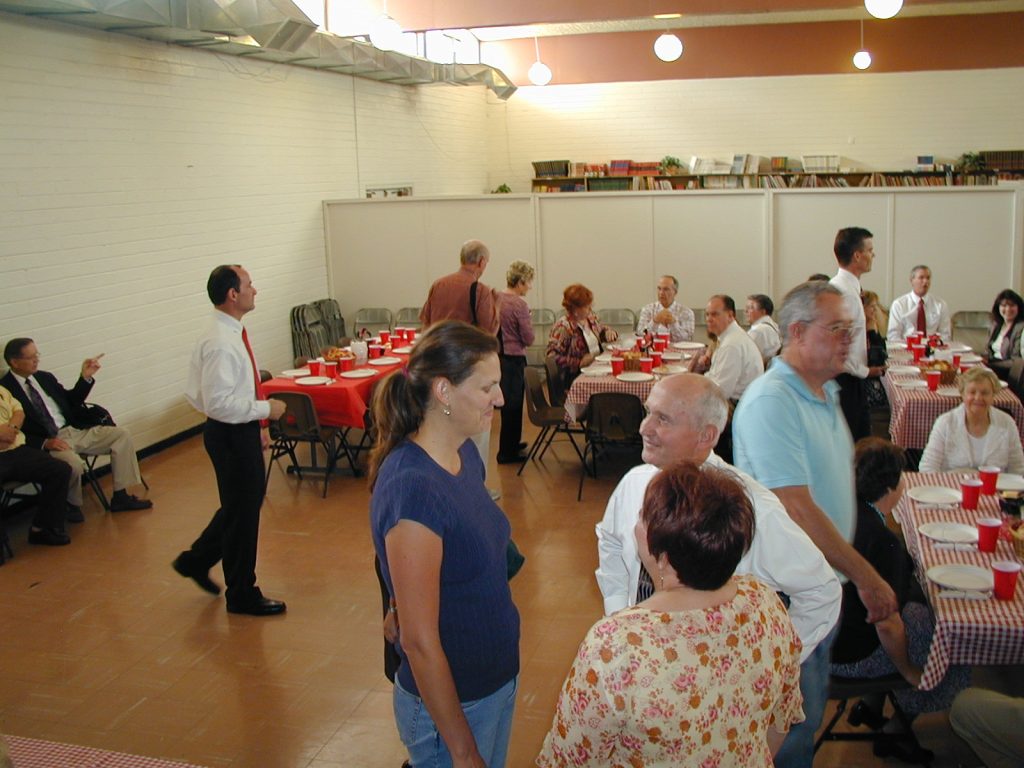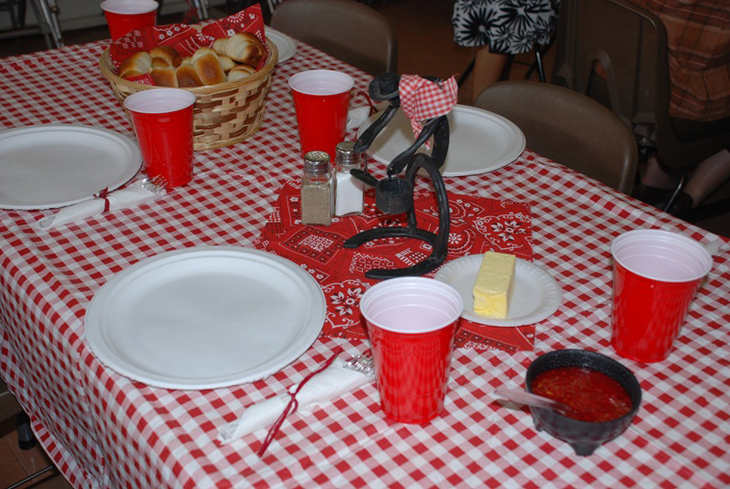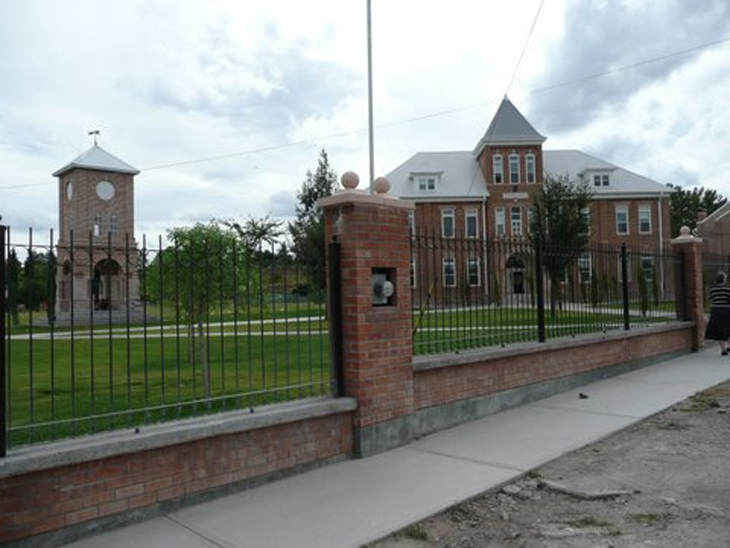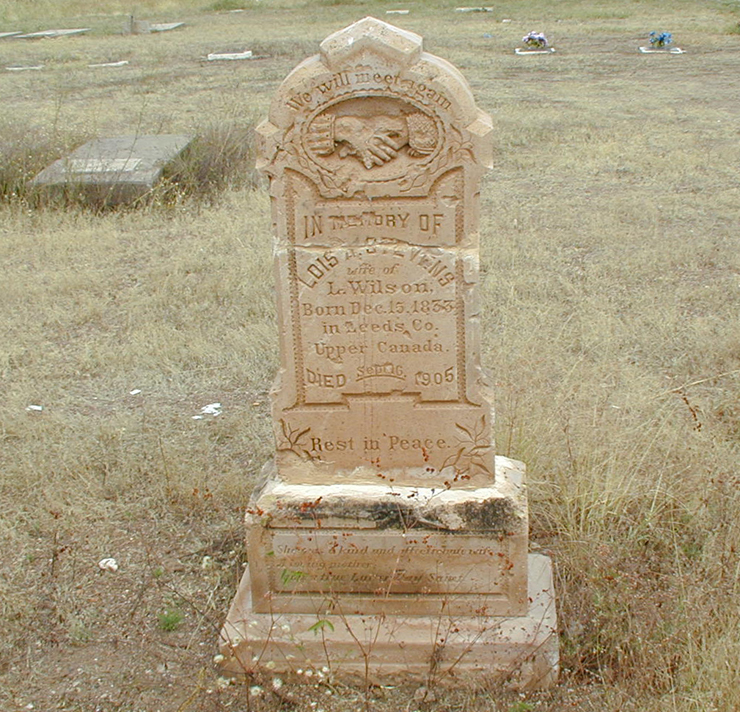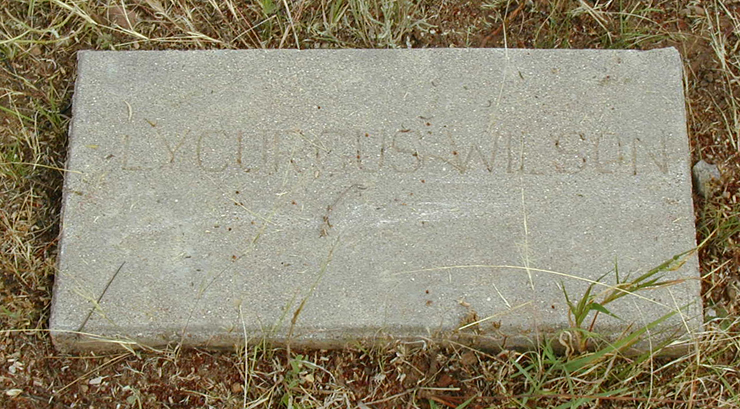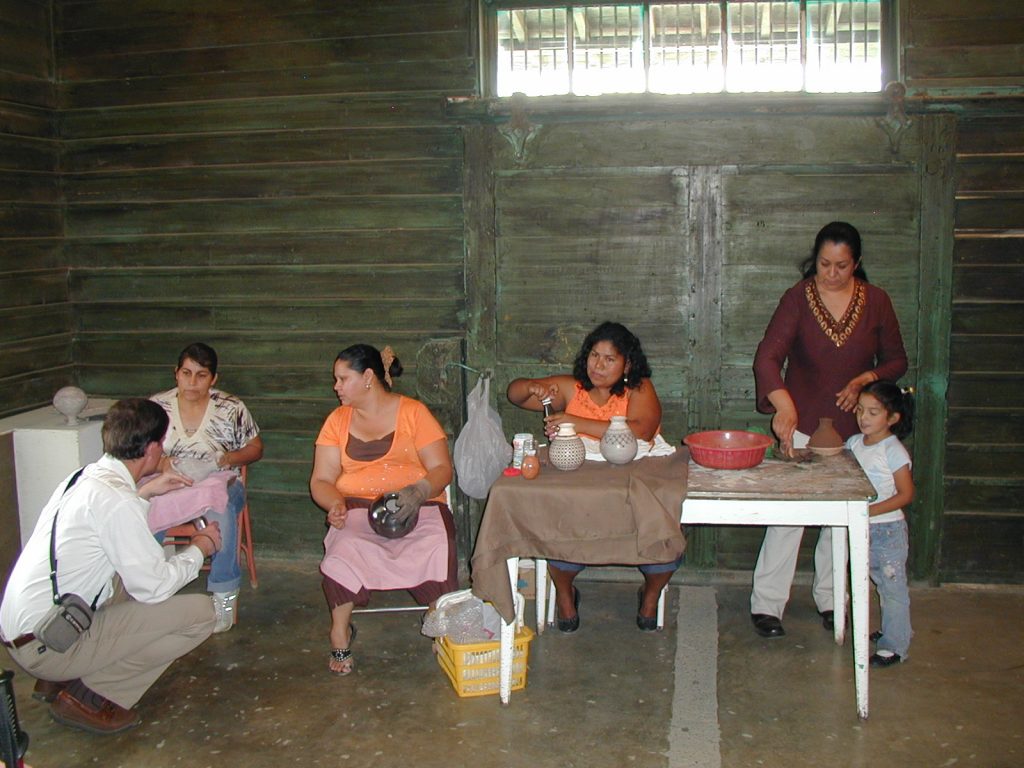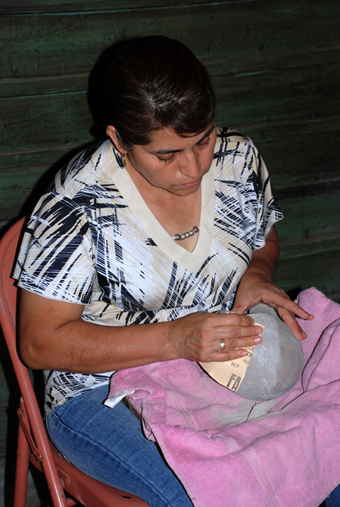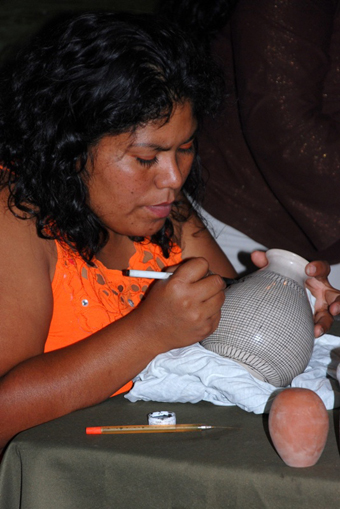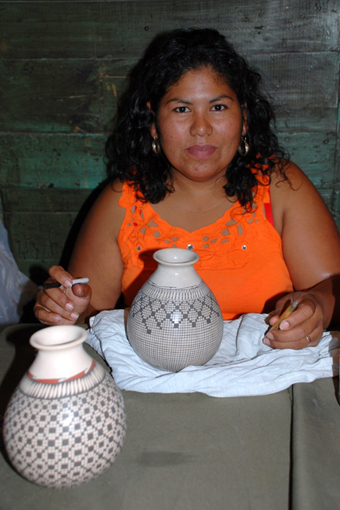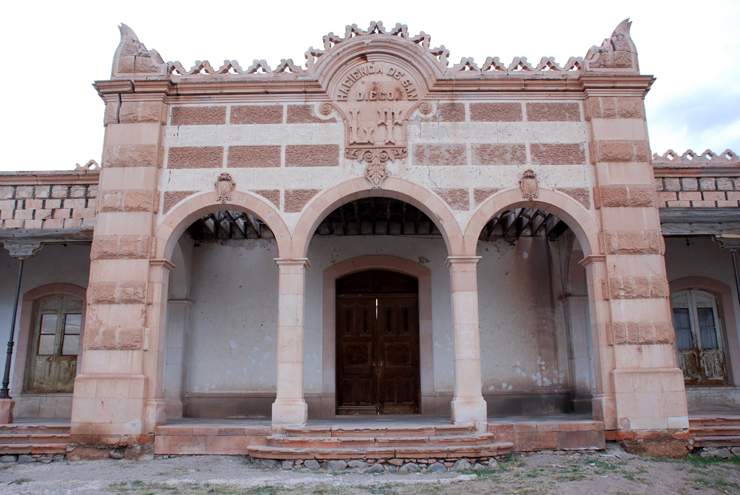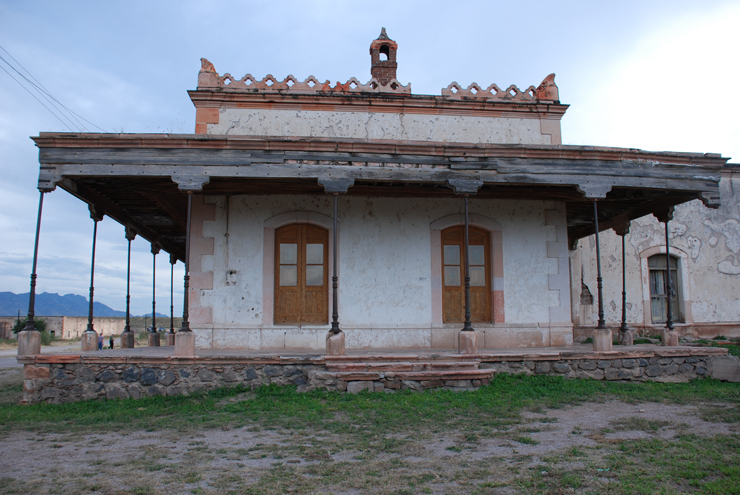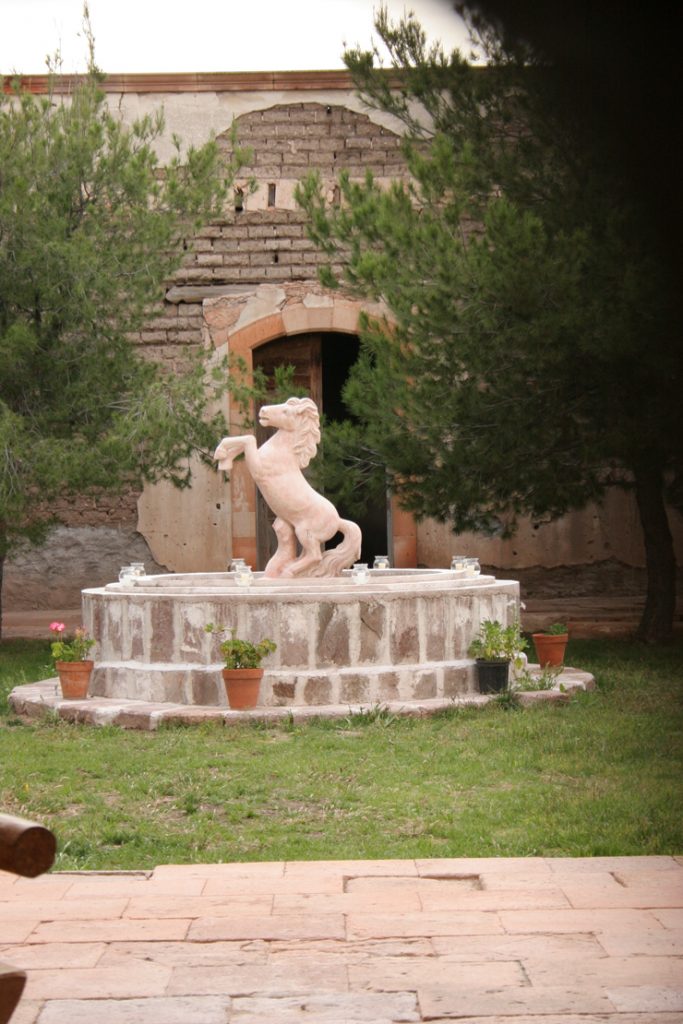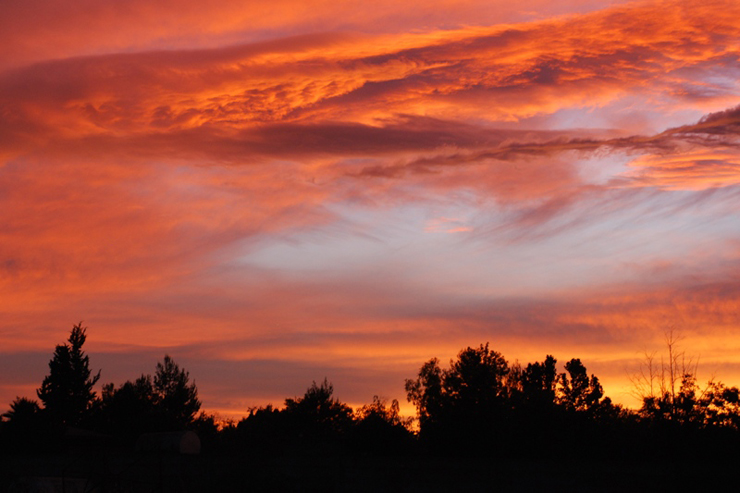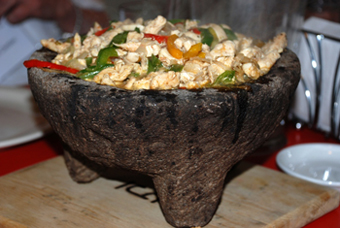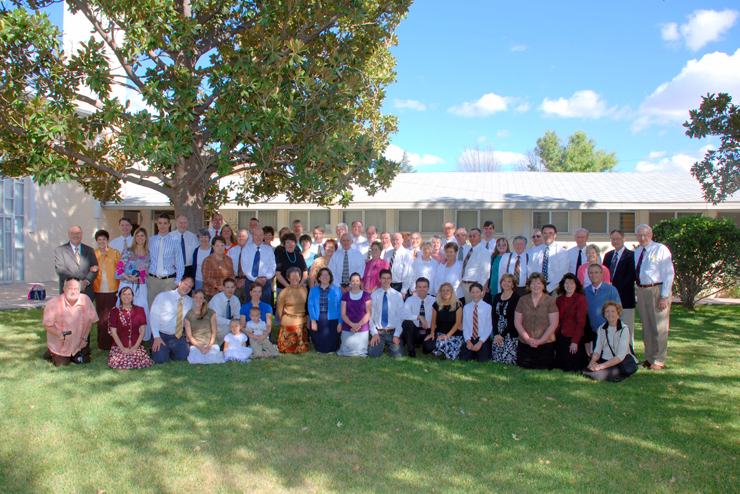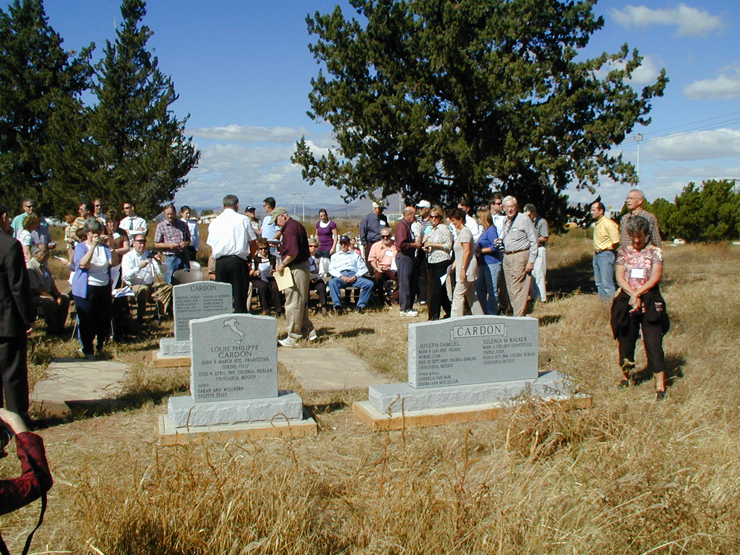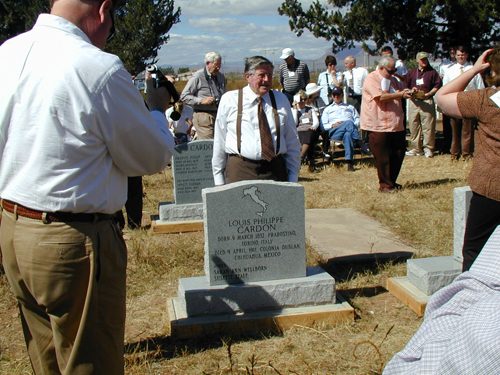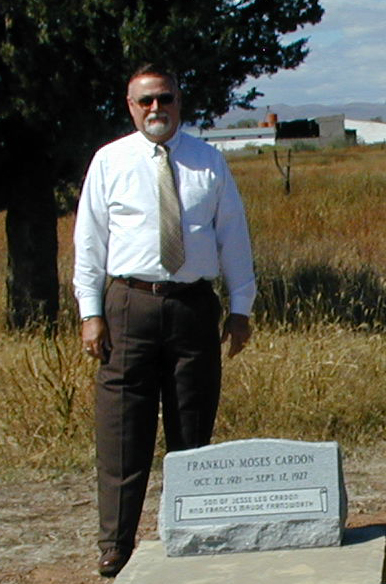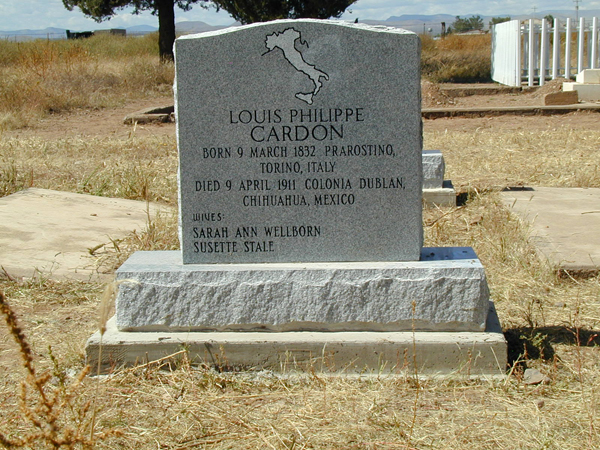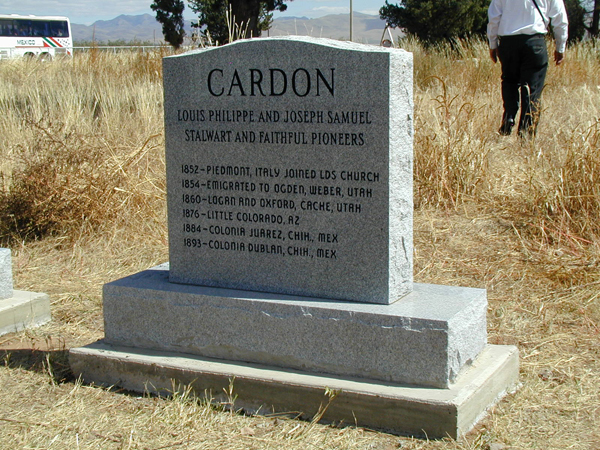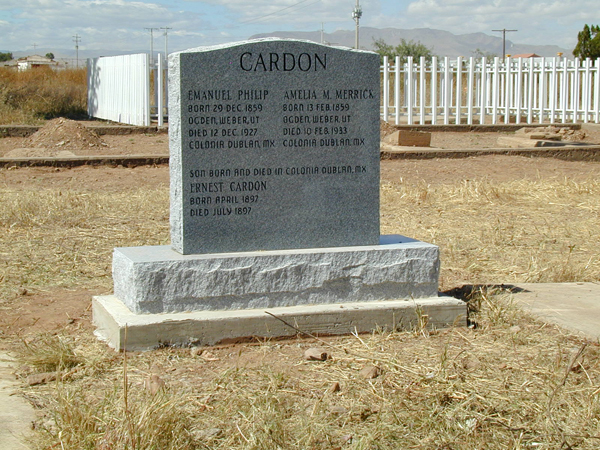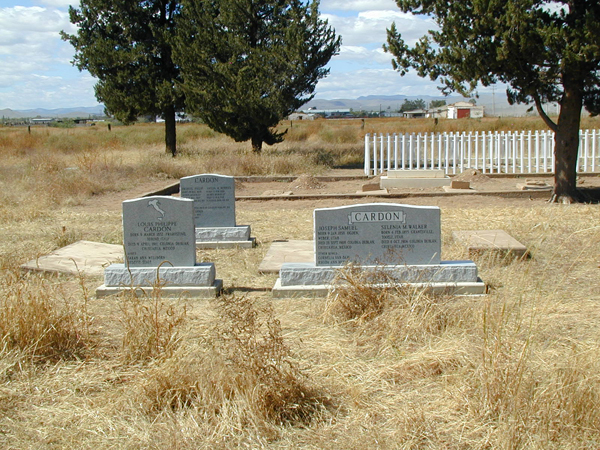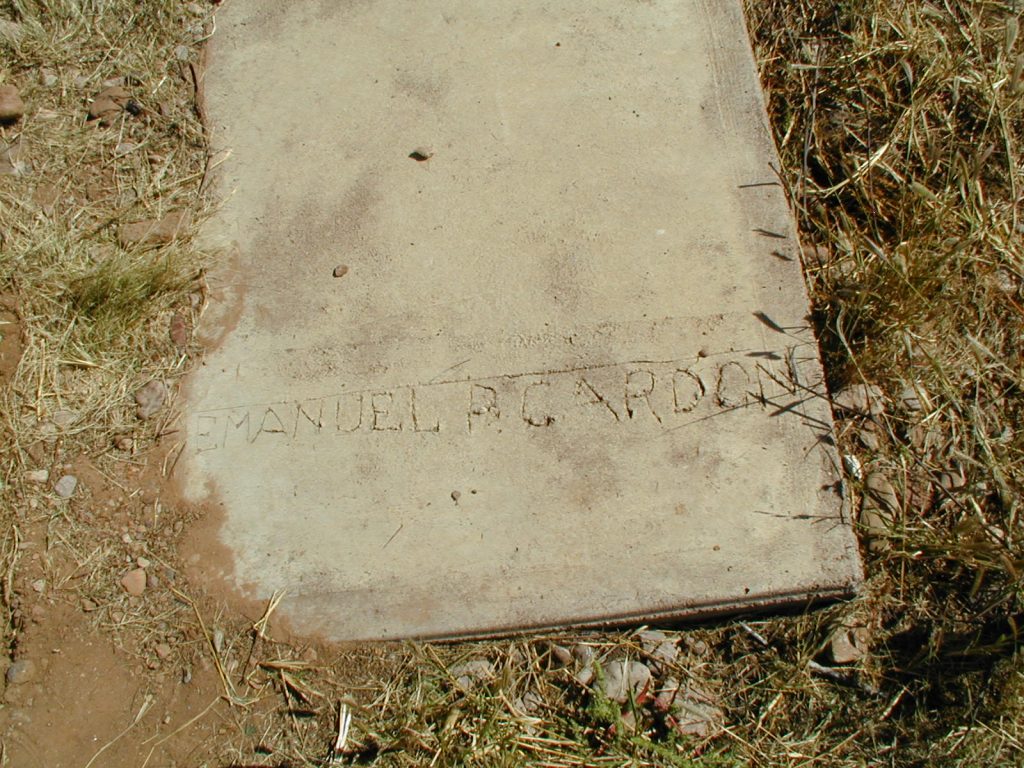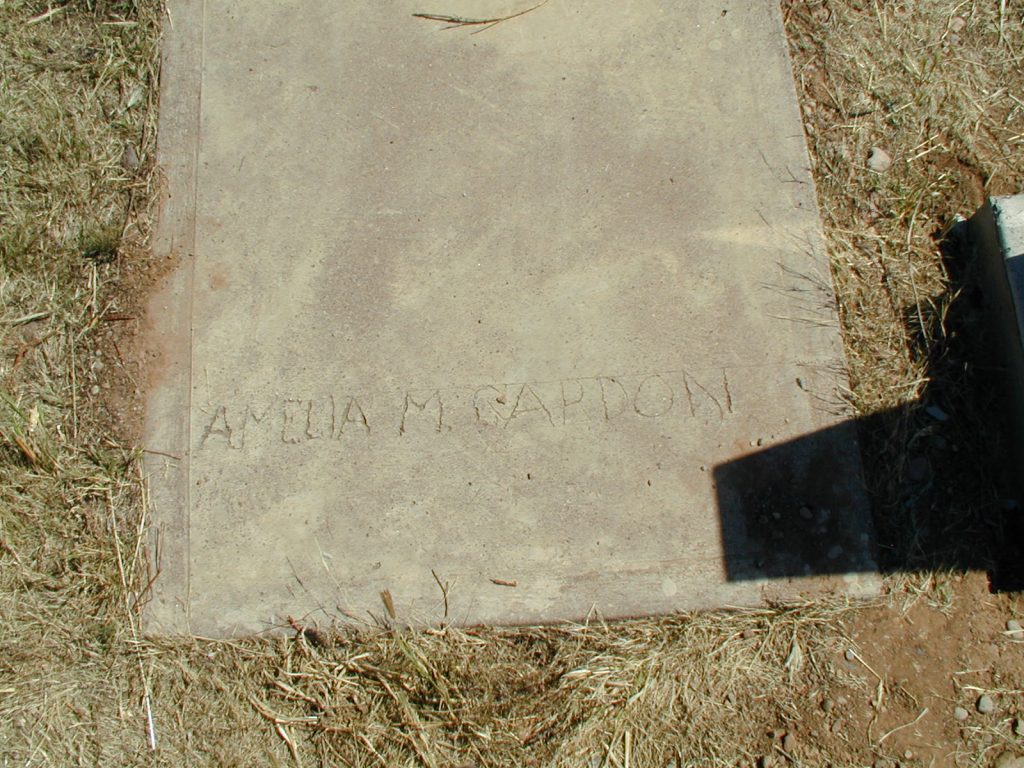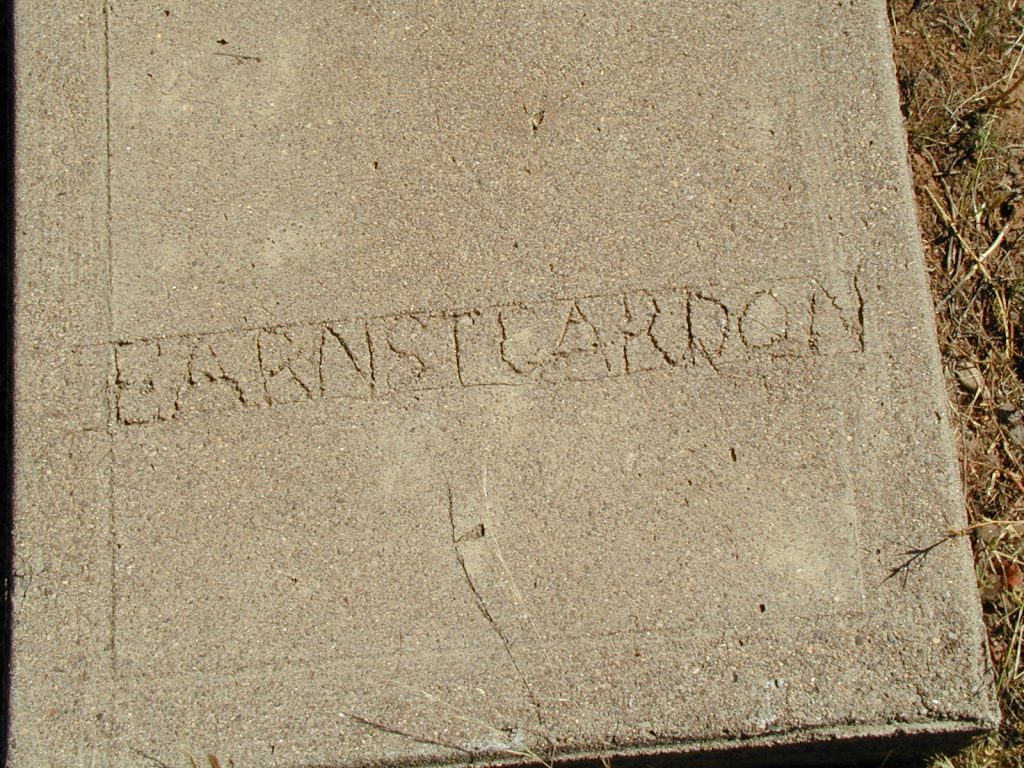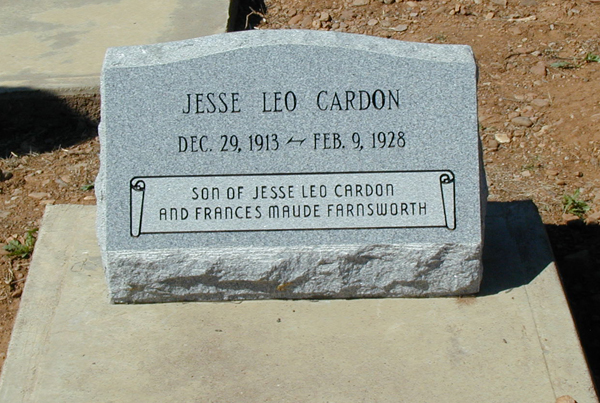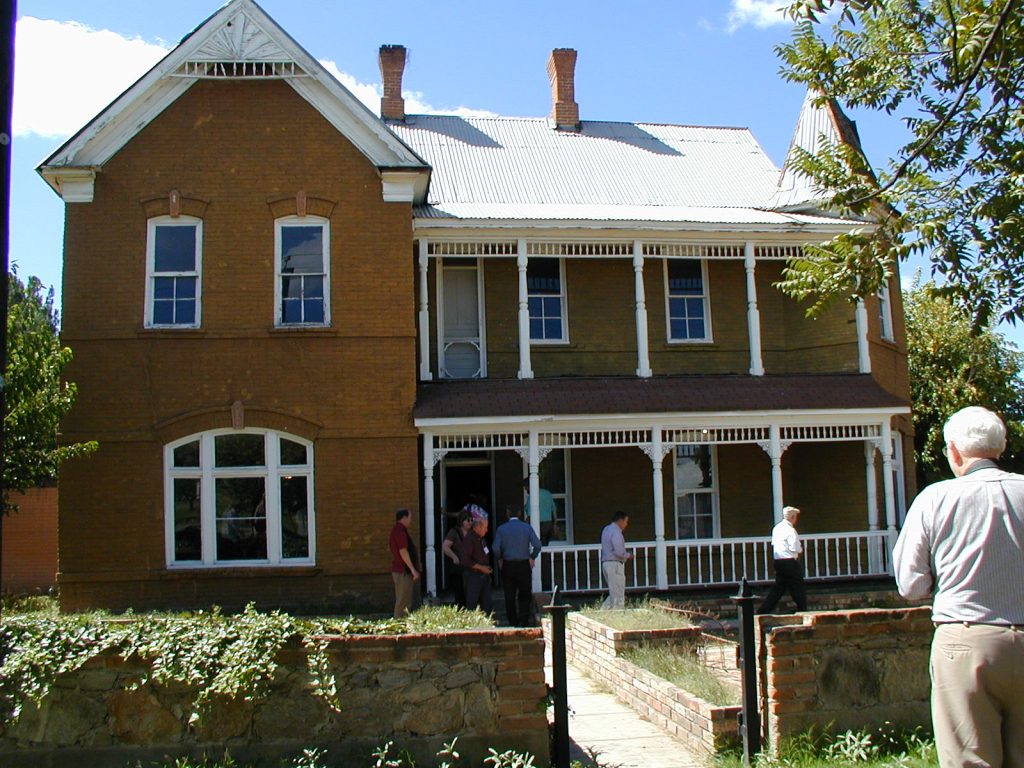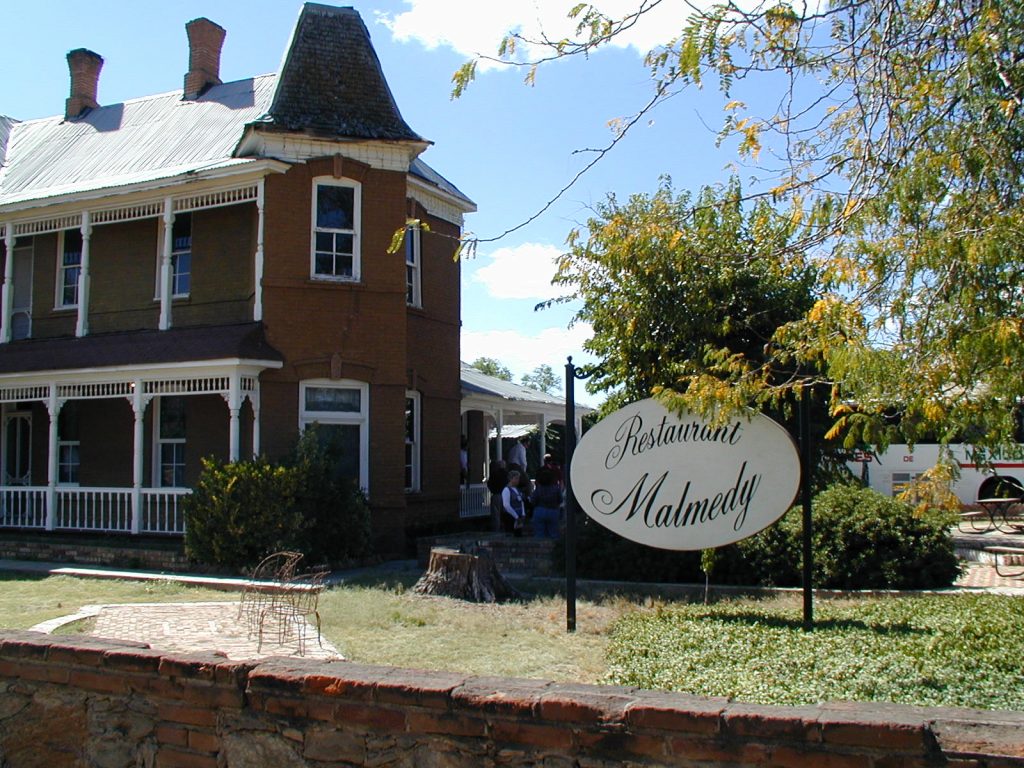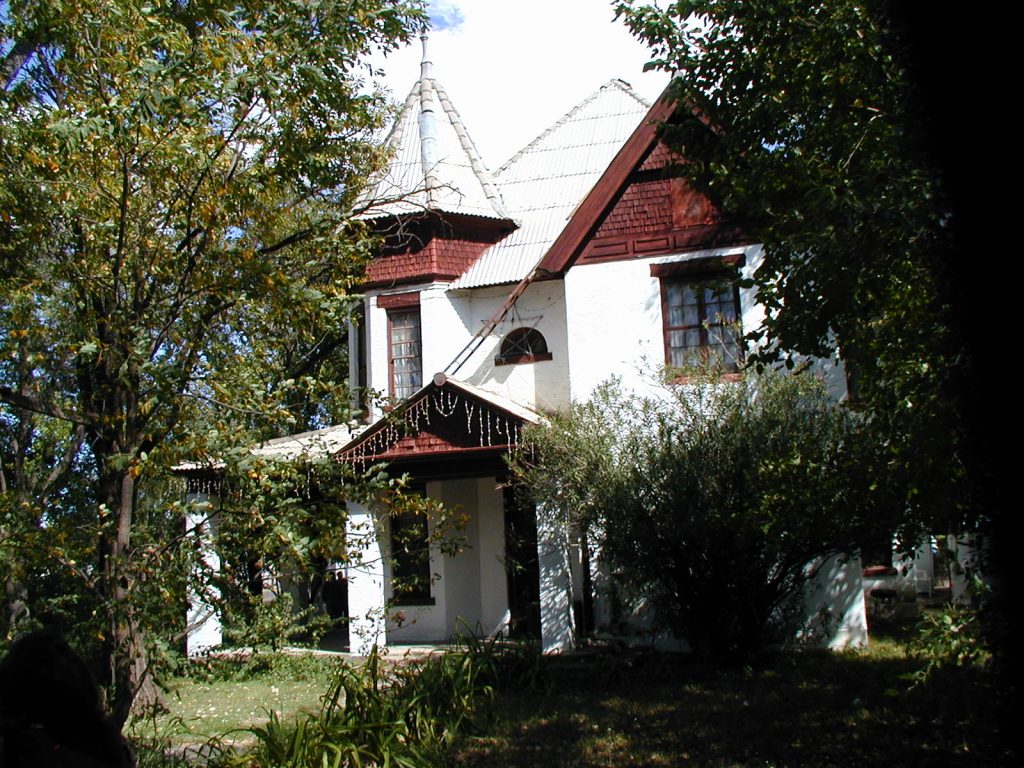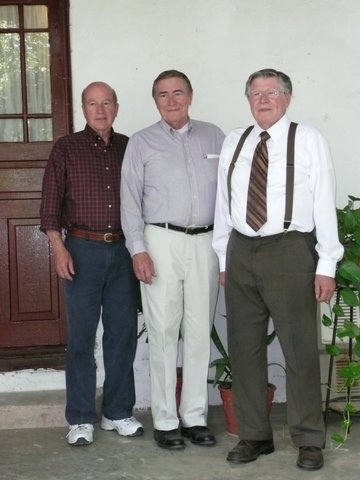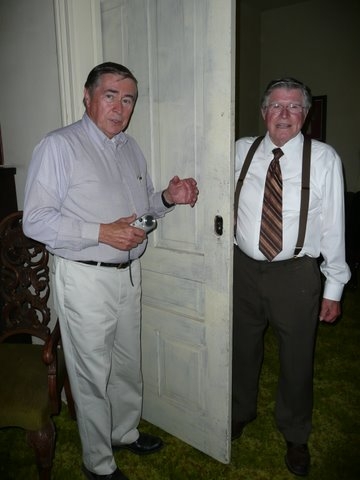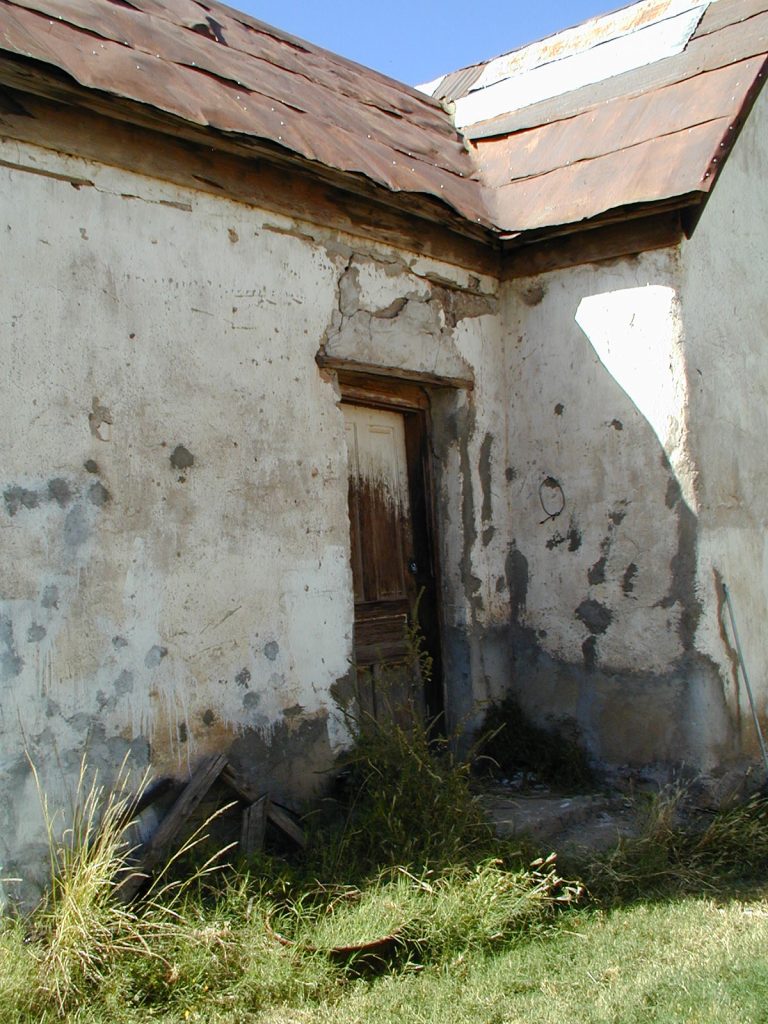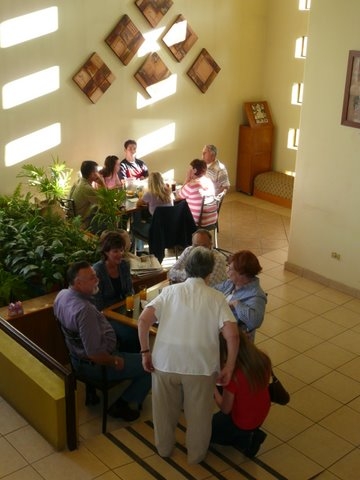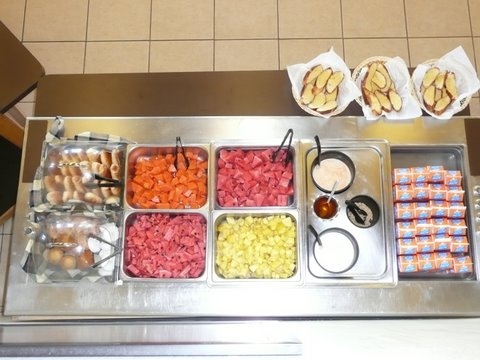Kudos to Becky and Greg Smith who put together an excellent trip to Mexico. Everything worked beautifully. We left on Friday the 10th of October and headed for El Paso, Texas. Those who flew together from SLC were greeted and welcomed over the intercom by the Captain of the US Airways jet.
We gathered in El Paso, some coming from as far away as Pennsylvania.
The largest equestrian bronze in the world resides at the El Paso International Airport. It is 36 feet tall on an 8 foot base weighing in at 34,000 pounds. It is built to withstand 155 mile per hour winds. Gwen from Pennsylvania is standing next to the statue. Her brother Doug provided the picture.
We had more in our group than could fit on one bus, so our guide, Mr. John Hatch, provided a 10 passenger van for the overflow. Brother Hatch rode in the bus and added commentary as we traveled along. His wife shared her comments as she drove the van. We drove to Columbus, New Mexico, left our USA bus, and walked, toting our luggage, across the border, entering Mexico at Palomas. The picture of the bus unloading in Columbus was taken from across the border by those who were lucky enough to ride across in the 10 passenger van. Border Police required us to press a button to pass into the country. If it caused the light to turn green you walked straight through. Those who got the red light were subjected to a luggage search. As luck would have it, it went red three times in a row on Becky, Greg and Linnea.
We met in Palomas, Mexico at the “Pink Store” and loaded our luggage on the Mexican bus then had lunch in the Pink Store (that is really its name). The food was pre-ordered (Mexican Platter, Chicken Breast, or Beef Tacos).
Other interesting photos included:
1. The lizard wall in the dining room
2. Wash basins in the ladies room
3. Dick next to the musician
4. Buildings next to the Pink Store
After lunch we proceeded to the colonies. During the ride, Larry Porter shared some introductory remarks about church history and why the Cardons went to Mexico. Louis B. Cardon also shared some stories about Louis Philip Cardon. Our Mexican Bus driver’s name was Luis.
Due to the large group on the adventure, we were checked into two hotels in Colonia Dublán. The smaller group stayed at the red hotel.
The green hotel with a clover motif housed the rest of us.
After checking into our rooms, we went to dinner together at La Finca de Don Crúz.
Notice the bottled fruit on top of the walls and the Mexican flag in a corner of this restaurant. The food served buffet style was very good.
Our rooms came with a continental breakfast at the hotels we occupied or we could cross the street and eat a full breakfast (all inclusive) at a restaurant. After a good nights sleep and breakfast we went to Colonia Juarez. The small town is set in a beautiful valley with lots of orchards and small farms. John Hatch gave us quick tour through town, crossing a very narrow bridge in the process. He told us the school bus had driven off the bridge on occasion, to which Mary Naylor and Bob Cardon attested to this having first hand knowledge of one of the busses that slipped off the bridge.
Of course one of our purposes was to visit the Colonia Juarez Temple.
Although it was overcast outside, we enjoyed a wonderful session performing ordinances for Cardon ancestors thanks to Lavor Cardon’s preparations and the extraction done by Brother Cena on the Italian Notary Records.
The Relief Society sisters provided lunch for us in the elementary school near the Colonia Juarez Academy following our temple session. In true Relief Society fashion we had table cloths, decorations, and everything.
During lunch a few of us visited the Colonia Juarez Graveyard and got some pictures of our Wilson/Stevens relative’s grave markers.
“She was a kind and affectionate wife, a loving mother, and a true Latter Day Saint”
Lycurgus and Lois are maternal grandparents of Lucinda Hurst Cardon, the wife of Joseph Elmer Cardon.
Returning to Colonia Dublán, we changed clothes and headed to a small village called Mata Ortiz. In Mata Ortiz a gentleman by the name of Jose Quezada re-created a method of ancient pottery making. It looks very similar to pottery that was found in the nearby Indian ruins of Casas Grandes. We watched as a small group of women showed us how they made the pottery.
The lady standing made a clay “tortilla” which she pressed into the bottom of a plate for support. Then she made coils of clay which she pressed into the tortilla base working up until she had formed the mouth of the pot. After the pot dries for several days or weeks, it is sanded and smoothed.

Another woman demonstrated how to brightly burnish a dried pot before it is fired.
Her pot is black because they mixed graphite into the raw clay before forming the pot.

Next another artisan decorates the pot using a brush made of a few fine hairs attached to an old BIC pen.
The fine lines and designs are hand painted on the pots using locally found coloring agents. After decorations are finished, the pot is fired for 30 minutes by placing it under a metal bucket then building a fire on top of it. They were not able to show us the firing process during our visit because the wind was too strong. Pots fired under windy conditions break apart when the bucket is removed because of the sudden temperature change.
Many of the local residents display their art work, hoping to make a sale.

Coming out of the demonstration our attention was immediately drawn to a mariachi band playing across the street in front of the Jose Quezada home and store.
First thought was that they were hired by the Quezada family to attract attention but as it turned out they moved up and down the street. A quick note about the demonstration room, it was the old Parson’s depot. This was where the local colonists gathered to catch the train during the 1912 exodus due to the revolution.
To see additional photos, by Linnea, of the pottery and their different styles, click here.
On the way back to town, the bus stopped at an intersection in the road for a few minutes while our guide took a dirt road to see if the road was passable for the bus. The road lead to the Hacienda of San Diego which was built by Don Luis Terases. This large estate owner became friends with Louis Paul Cardon and he in turn did survey work for him while not teaching school. According to Louis Sanders Cardon, his estate was said to be the size of New Mexico and Arizona together. The report from our Guide came back that the road was not passable by the bus. Some of Dick Cardon’s family were able to make it through in their vehicles.
The side shot is how it appeared from the road.
Sunny Cardon took this inner courtyard photo through a tiny hole in a large wooden front door, probably where a dead-bolt lock or something might have existed at one time. Her camera lens revealed a hint of the grandeur of bygone days.
That evening we ate together in the restaurant directly across from the hotel where most of us stayed. The sunset while walking to the restaurant was spectacular.
Mexican Sunset
We had a delicious peach juice beverage and sizzling chicken and beef mixtures served bubbling hot in three legged lava rock pots. We dished the yummy contents out of the pots and into fresh white corn tortillas and ate it fajita style. Several families purchased lava rock pots and took them home so they could try their hand at cooking in them.
Sunday morning following breakfasts, we attended church in Colonia Dublán. As it turned out, this was their Fast Sunday due to Conference last week, so we probably should have gone fasting. The Fast and Testimony service was very uplifting. This photo (complements of Linnea Cardon) is a group shot we took following the service.
Due to the nature of the Colonia Dublán Memorial Graveyard, we returned to our rooms and changed clothes prior to our visit to the cemetery. At the cemetery we held a dedication service. Brother Neil Cardon conducted the service.
We sang “For the Strength of Hills” after which Carl Goodman offered the opening prayer.
Boyd Cardon dedicated the monument for Joseph Samuel Cardon, Selenia Mesinile Walker and children. Watch the video of the dedication prayer (link will open a download prompt).
E. G. (Bob) Cardon dedicated the monument for Emanuel Philip Cardon, Amelia Maria Merrick, and their son Ernest Cardon.
We sang “Faith in Every Footstep” and Grover Cardon offered a closing prayer.
Jesse and Franklin were buried not too far down (away from the entrance) from the other graves. We don’t know for certain where Louis Philip, Joseph Samuel, and Selenia were buried so we located the monuments next to Emanuel’s grave which was marked with a concrete slab that had his name scratched into it.
Although not directly related to Philippe and Marthe Cardon, some “in-law” markers were also found and photographed, including Phillip Hurst, Willard Carroll, and Annie Robinson.
We were treated to lunch at “Aunt Kate’s home” which is now a restaurant.
A couple of lots behind Aunt Kate’s was the home of Louis Paul Cardon where he lived in Mexico. Now owned by the Bluths, Brother Scott Bluth and his wife (whom we met at the temple and at Fast and Testimony meeting) invited us over to see the home. They were very gracious and had many stories to share.
Louis, Grover, and Phil (brothers) are grandsons of Louis Paul Cardon and are shown here inside the home.
Family tradition says that after Joseph Samuel contracted typhoid fever, he was moved into the parlor where he eventually died. The original brass door pull is still on the sliding door of the parlor room.
Rumor has it that Poncho Villa, the revolutionary, commandeered the home while staying in Colonia Dublán and stabled his horse in the front room of this house, laying planks down over the stairs so the animal could go in. See the Louis Sanders Cardon Oral Interview for descriptions of the home. At one time during the revolution, and before the exodus, Louis S. Cardon – the son of Louis Paul Cardon – hid the rifles, guns, and ammunition up in the attic through a trap door. The story is that he was still in the attic with the door ajar when the revolutionists burst into the home looking for weapons, but they did not see him or find them.
Off to the side of Louis Paul’s home was the small three room home of his mother, Susette Stalé Cardon. The home now serves as storage space, but the exterior is much as it was at the turn of the century.
Down the road and to the right we stopped by the home where Bob Cardon and Mary Naylor used to live.
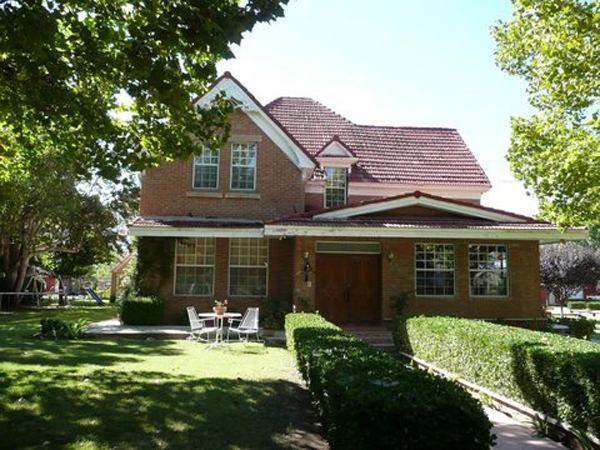
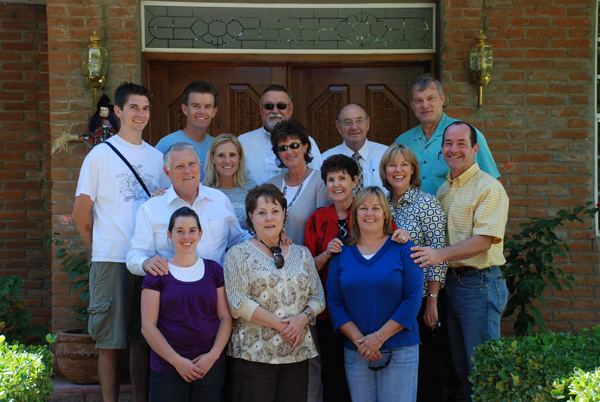
The area where the Colonies are located is called Casas Grandes. The name comes from some Indian Ruins on the nearby river.
The river and the city are named after these ancient apartment style dwellings, some of which were up to 7 stories high. Evidence shows that Casas Grandes was tied in with Mesa Verde, Chaco Canyon, Canyon de Chelly, and other settlements to the North and the Mayan/Aztec civilizations to the South. The walls appear to be made from a dirt and gravel aggregate that were compacted and formed. To stop them from eroding away, they were plastered. Much of the original plaster has now weathered away and the Mexican government has attempted to re-plaster some of the walls hoping to preserve them for the enjoyment of future sightseers. We walked through the ruins and visited a museum at the site that showed many of the artifacts. It was amazing how closely the Mata Ortiz pottery resembled the ancient ones.
Sunday evening we went back to the church and ate sandwiches, home grown Fugi apples, and cupcakes then enjoyed a fireside with some of the old timers in the ward who told us how life was in the Colonies during their lifetimes. One of the speakers was Chato (Gayle) Bluth. He served in the US Navy. He was drafted because he was the son of US citizens although he was born and raised in Mexico. While in the service of the US Navy they used him for his basketball skills. So as to not lose him, they kept having him sign up for more and more courses. He final got in all the classes offered so they had to let him go. Because of his training, he ended up in a submarine. He played basketball for the Mexico team in the 1960 Olympics. Sister Taylor who was 92 years old also spoke to us and answered many questions from the group. Waldo Call told us about many of our Cardon relatives that he grew up with in Colonia Dublán.
Monday morning, we all gathered at the Restaurant across the street from our hotel and enjoyed a buffet breakfast including many flavorful dishes. Scrambled eggs with green chili, spicy potato slices, tostados, creamed spicy vegetables, fruits etc.
After breakfast most of us loaded up the bus and headed back to El Paso via a border crossing in Ciudad Juarez. Others went with Mr. Hatch in his van for a tour of Copper Canyon.
While on the bus, several articles were passed out including:
- Louis Philip Cardon Lifelong Pioneer
- A Brief History of Emanuel Philip Cardon
- Joseph Samuel Cardon and Selenia Mesenile Walker Cardon
- Jesse Leo Cardon
- Franklin Moses Cardon
The Jesse Leo and Franklin Moses handout was combined. This web version split them out as two separate obituaries.
It was an amazing trip.
We are now looking forward to our next family trip to Italy in 2010.

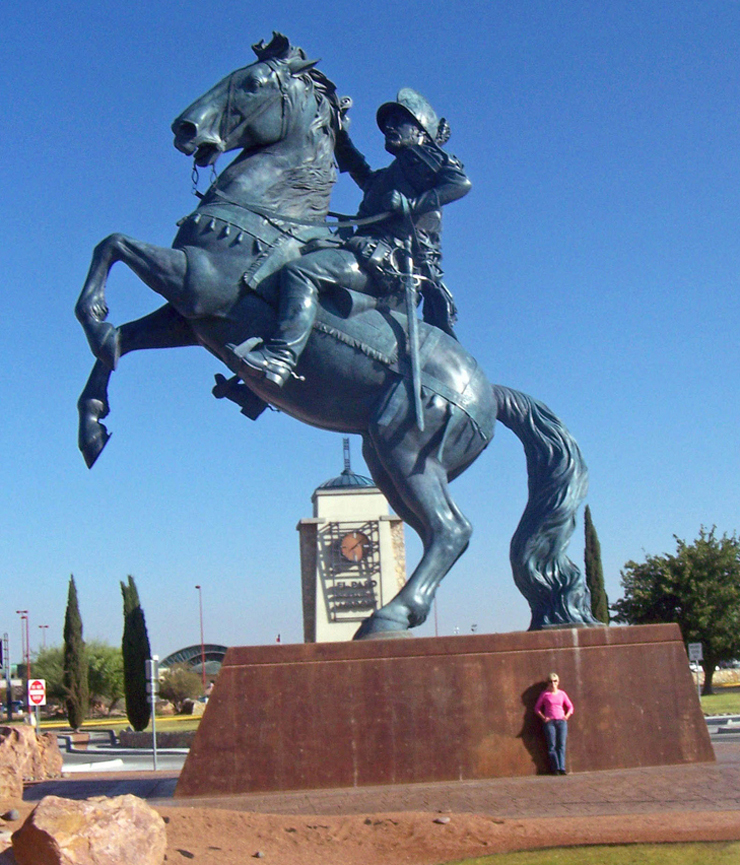

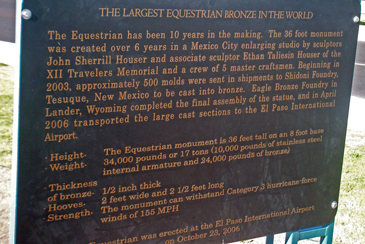







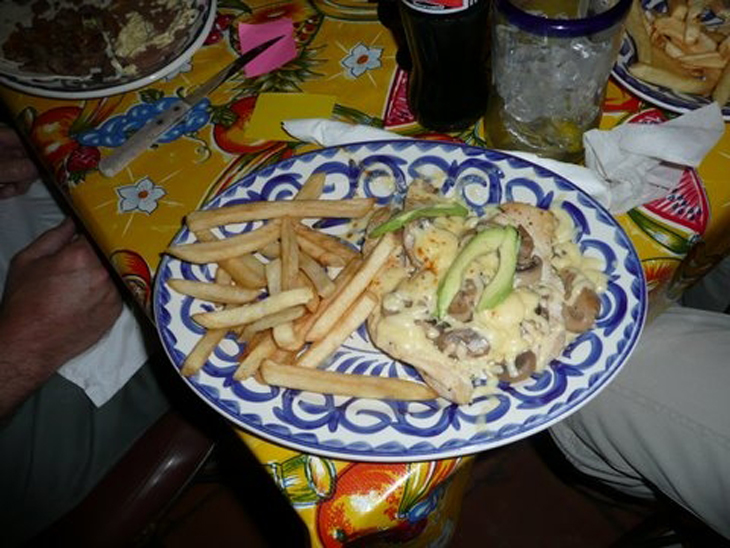
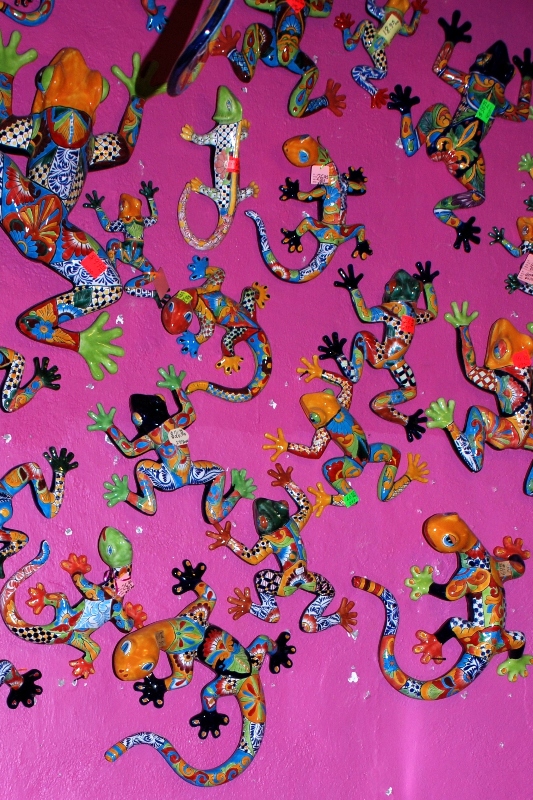
.jpg)




